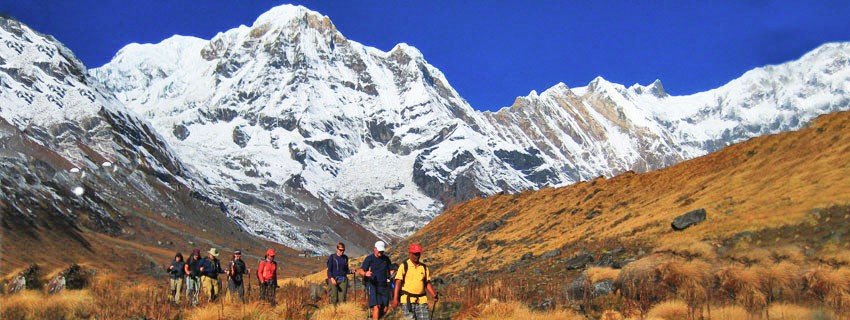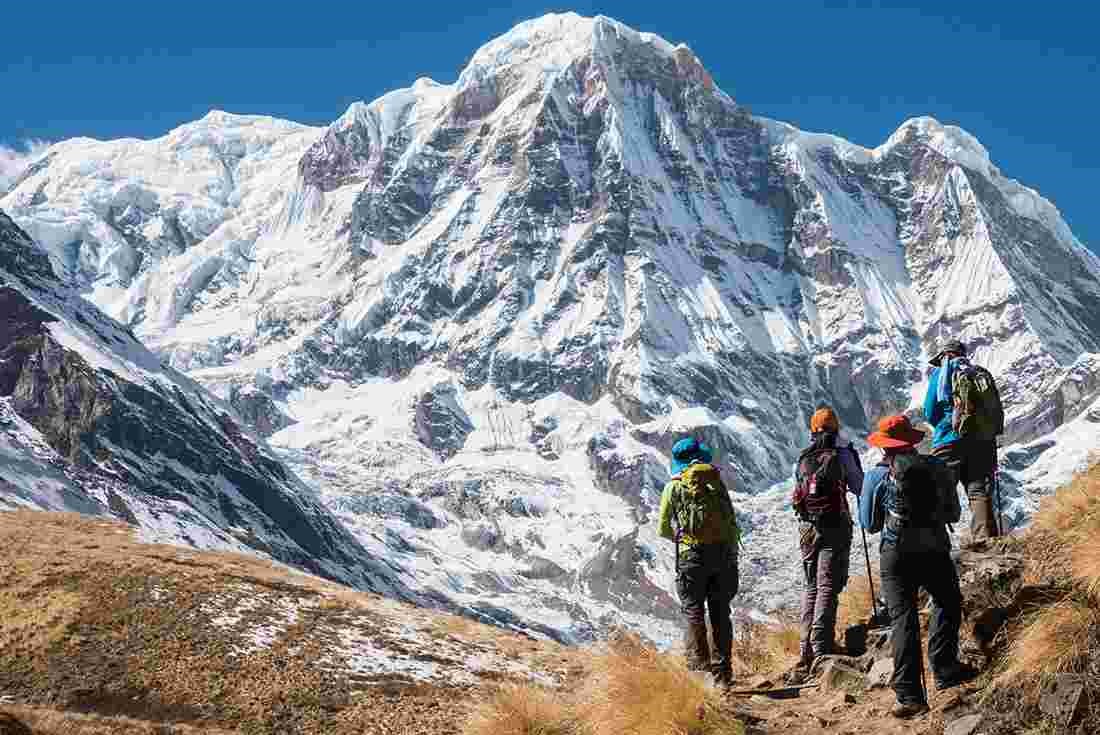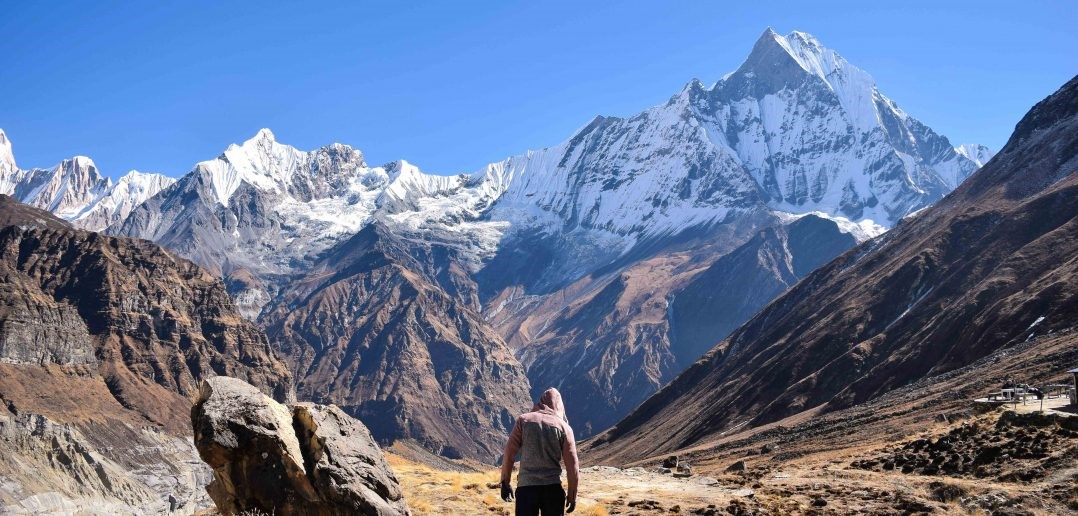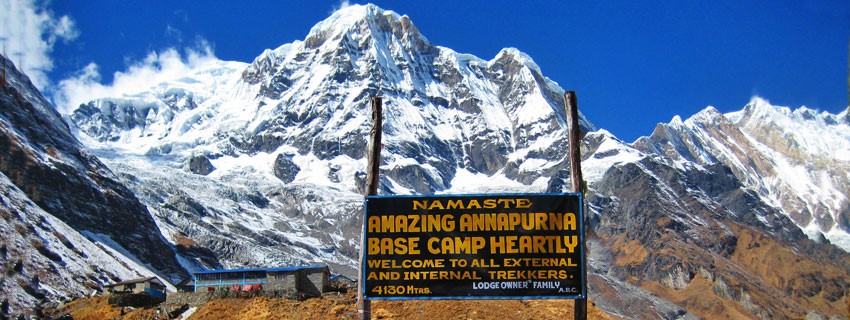Nepal is home to some of the tallest peaks in the world. Within them is the Annapurna massif, i.e., a compact group of mountains. The Annapurna range is a delight for mountaineers seeking to get lost in the world of the staggeringly mesmerizing Himalayas. Even as I write this article, I look above to glance at the postcards on my board from the Annapurna range. No, I haven’t been there myself but I got these postcards from someone special which is why I know that the range is so beautiful, more than its pictures from the words behind and the memories narrating them. Something that I’ve noticed in so many accounts of mountaineers who talk about the Annapurna range.
How to reach: You can fly down to Kathmandu or Pokhara in Nepal, though the latter works out more expensive so most people prefer flying in to Kathmandu. Then you would need a day in hand in order to travel by road to reach the trek starting point.
Best time to visit: February to early May, September to November.


Here’s looking at some interesting facts about this spell-bounding mountain range:
1. Now as per the Sanskrit language, the word “Annapurna” means full of food. In the practice of Hinduism, the name Annapurna is used in reference to the Goddess of Food and Harvest or the Goddess of Nourishment. This massive massif has been named after the said goddess as the locals believe that she resides somewhere within these peaks.
2. Within this massif is Annapurna I which is the 10th tallest mountain peak in the world with its altitude of 26,545 ft. The range comprises of a number of other peaks and accordingly various treks are conducted here leading to trails along different ones, thus, not everyone going to the Annapurna range can actually say that they have been to the 10th tallest mountain itself. The range however offers the maximum number of trails offered by any range alone in all of Nepal. It includes the Lower/Upper Mustang, Khopra Ridge, Mardi Himal, Poon Hill, Annapurna Base Camp, Annapurna Circuit, Tilicho Lake, Mustang Teri La Pas and many others.
3. Added to this, the Annapurna range is also home to some of the highest lakes found in all of Nepal. This includes the stunningly blue Tilicho Lake at 4,919 metres and also Khayar Lake (4660 metres) and Ice lake (4700 metres).


4. So, just how many peaks is the Annapurna range home to? 10? 20? Nope, try 30! Only one amongst them (Annapurna I) is above 8,000 metres in height. 13 peaks lay above 7,000 metres and the remaining 16 stand at a height of above 6,000 metres.
5. Yet in the 8,000 metres club, i.e., the group of mountains with an altitude above 8,000 metres, the Annapurna I itself is the least summitted peak. This is in stark contrast to the Annapurna region at large as that is in reality one of the busiest trekking regions worldwide. Now if you are comparing numbers on the height aspect, then yes, it is shorter than its fellow club members. But that doesn’t change the fact that its trail is immensely challenging nevertheless. This fact is highlighted by how while Everest has a mortality rate of 6.5%, Annapurna’s stands at a staggering 38%. Some believe it to be one of the toughest within the 8,000ers.
6. So, who were the first people ever to summit to Annapurna I? Maurice Herzog and Louis Lachenal were the first ever human beings to accomplish this mammoth of an achievement. It was the year 1950 when the two had started their path as a part of a French expedition. Encountering bad weather and other struggles along their way, they were forced to part ways with their gloves. Thus, although they reached the top, they paid the price with the loss of body parts as a consequence of frostbite.


7. The Annapurna area is also home to the deepest gorge in the world! Yes, that’s right. Kali Gandaki of Nepal holds the record for being the deepest gorge in the world. It lays between the Annapurna and Dhaulagiri mountain ranges and is visible to trekkers making their way in this area.
8. In 1985, the Annapurna Conservation Area was established which with over 7,629 sq. km. of area is the largest stretch of protected area in the entire country of Nepal. This area includes the Kaski, Manang, Mustang, Myagdi and Lamjung regions. The government makes concentrated efforts towards duly protecting this area, a fact that is a reassurance in present times.


9. The top of Annapurna is formed of limestone like the peaks of Dhaulagiri and like Everest itself. The relevance of the limestone is that it reiterates the theory about the formation of these mountains. It is believed that a shift of the tectonic plates in the ocean had eventually led to a collision which then pushed some of the Earth’s crust below and elevated the rest, resulting in some of the tallest mountain peaks in the world, as we know them today.
10. While Mustang has today become a trek (with special restrictions), it was once a kingdom. It lays in close proximity to the Tibetan border. The shrine of Muktinath in the Mustang region is deemed sacred by both, Hindus and Buddhists, thus, many believers from both communities’ head there to pay their respects. Also, within the Mustang grounds, the villages of Lupra and Thini exist as some of the last surviving practitioners of the Bonpo religion, making this a culturally stirring visit for the curious ones. Braga’s oldest monastery is also a crucial place of pilgrimage found over here.
Have you read Neeraj Narayanan’s book – This Guy’s On His Own Trip yet? It’s right now #1 bestseller in the travel books category on Amazon. Click here to buy your copy!

